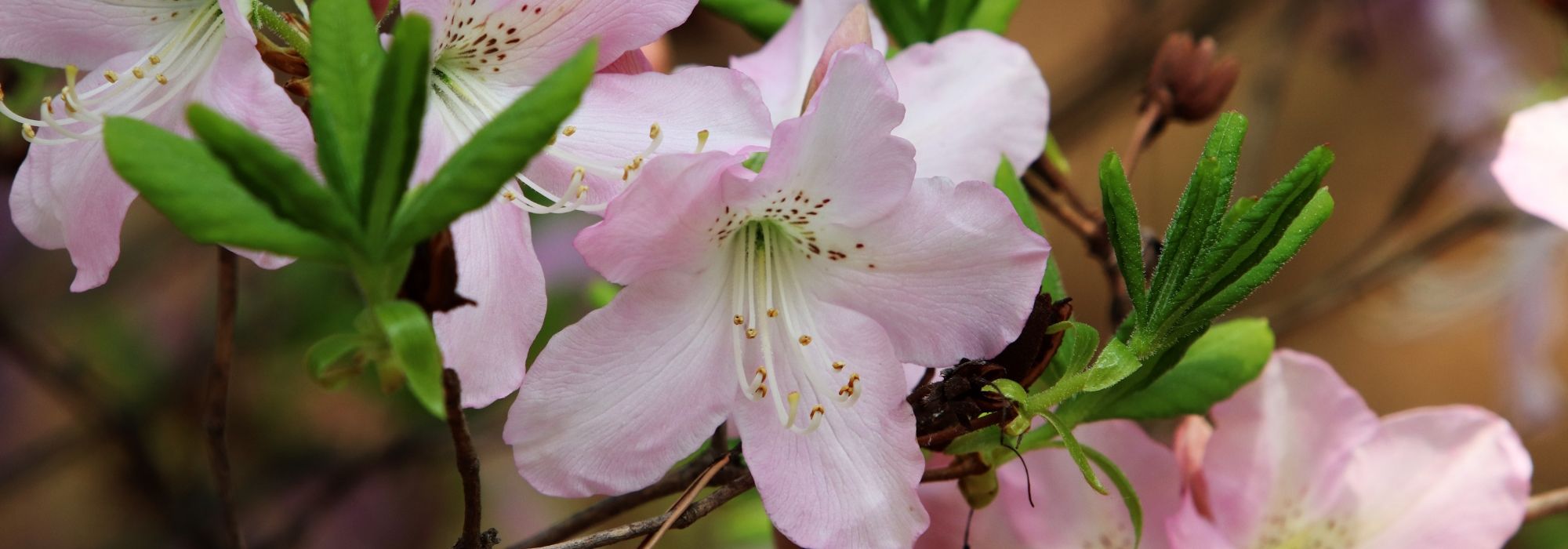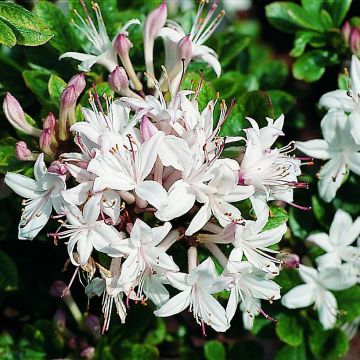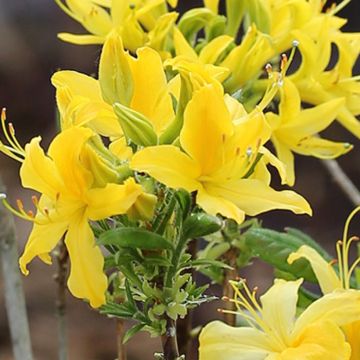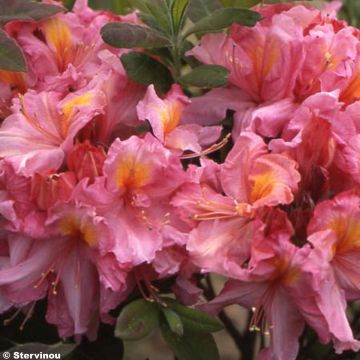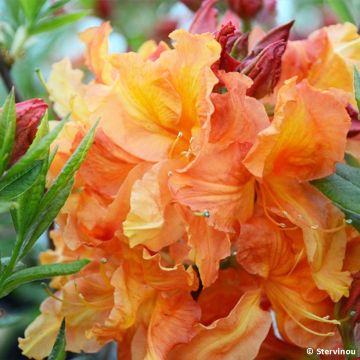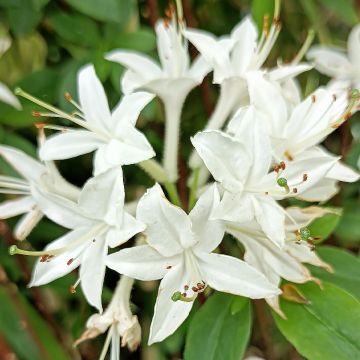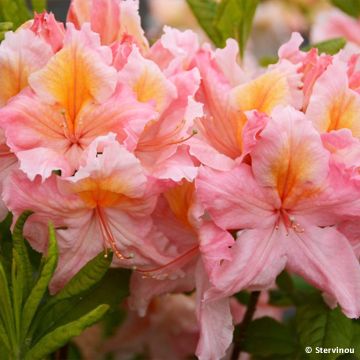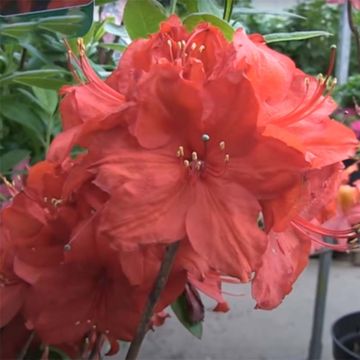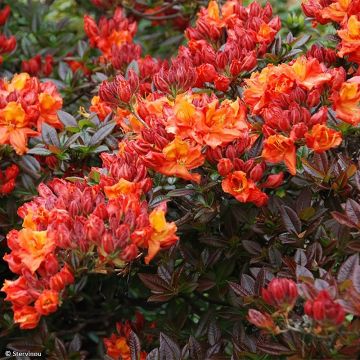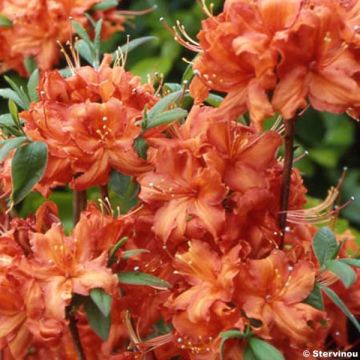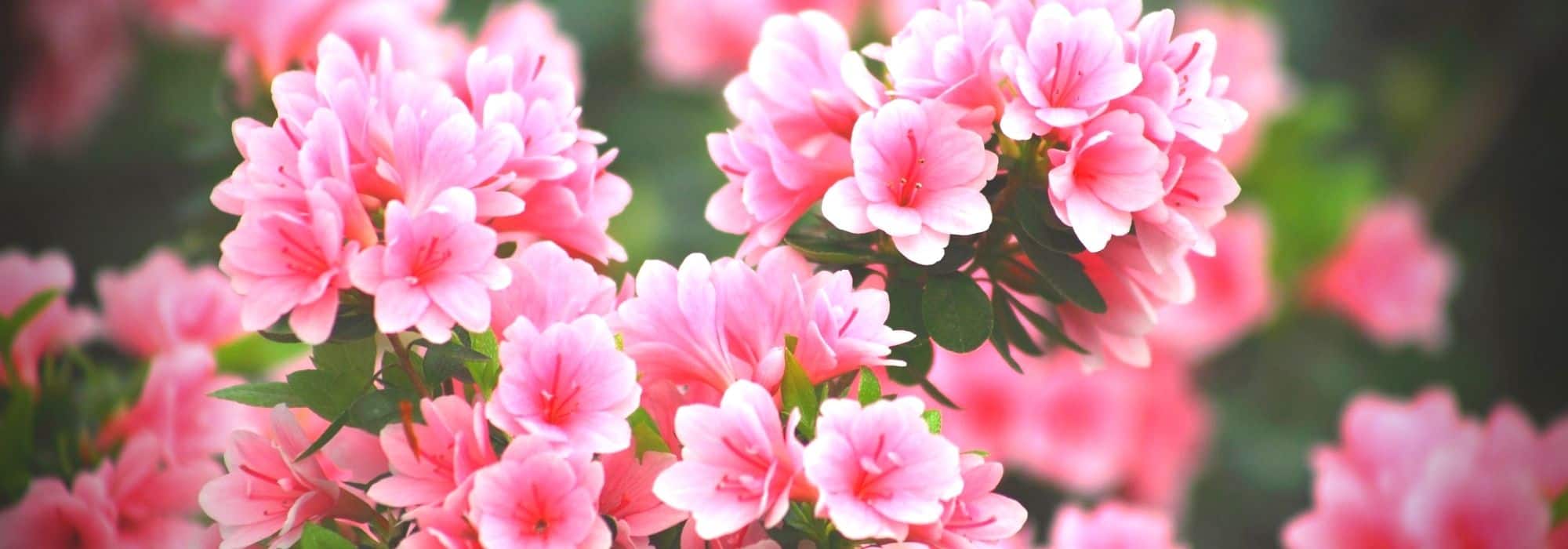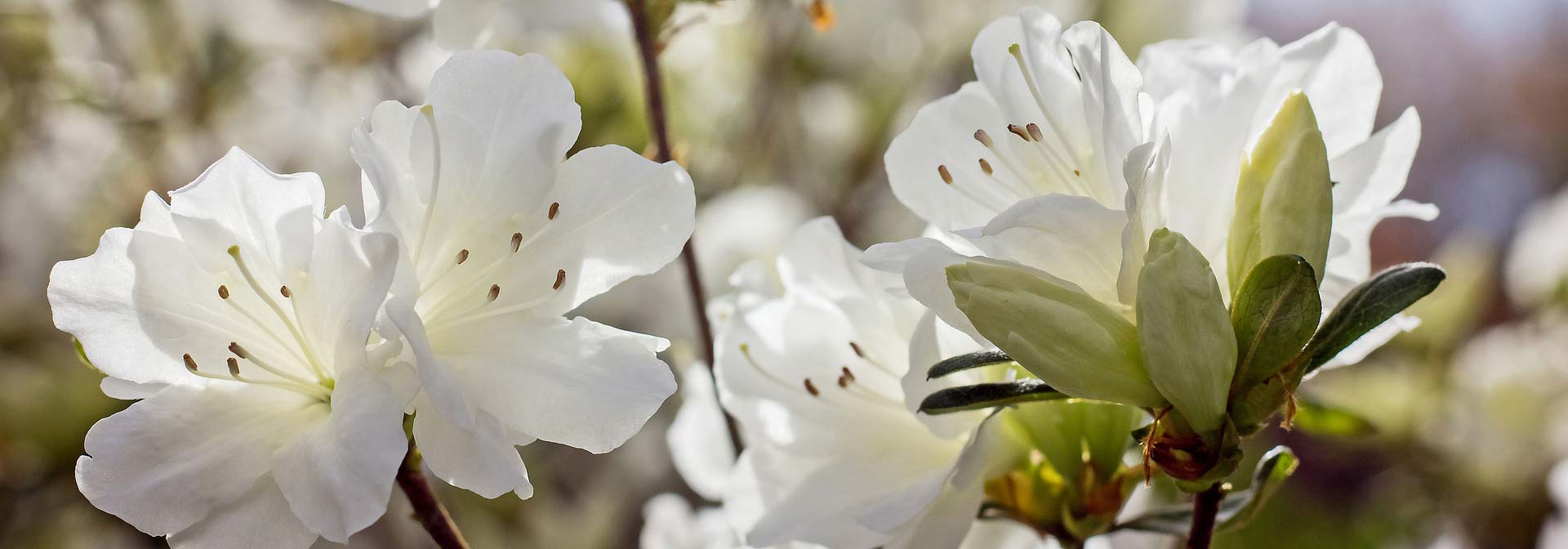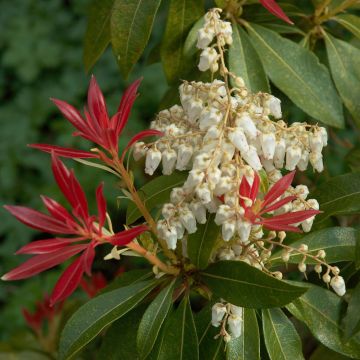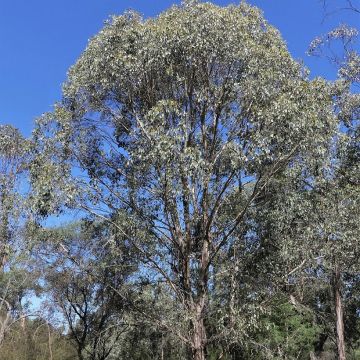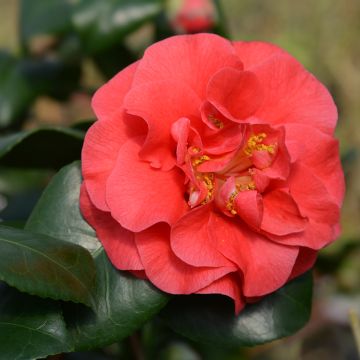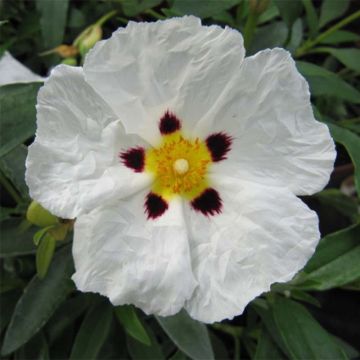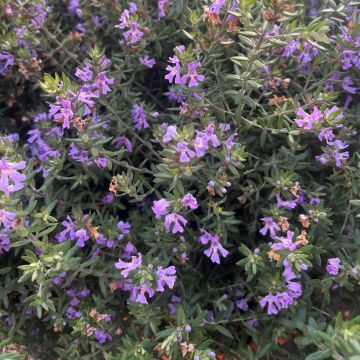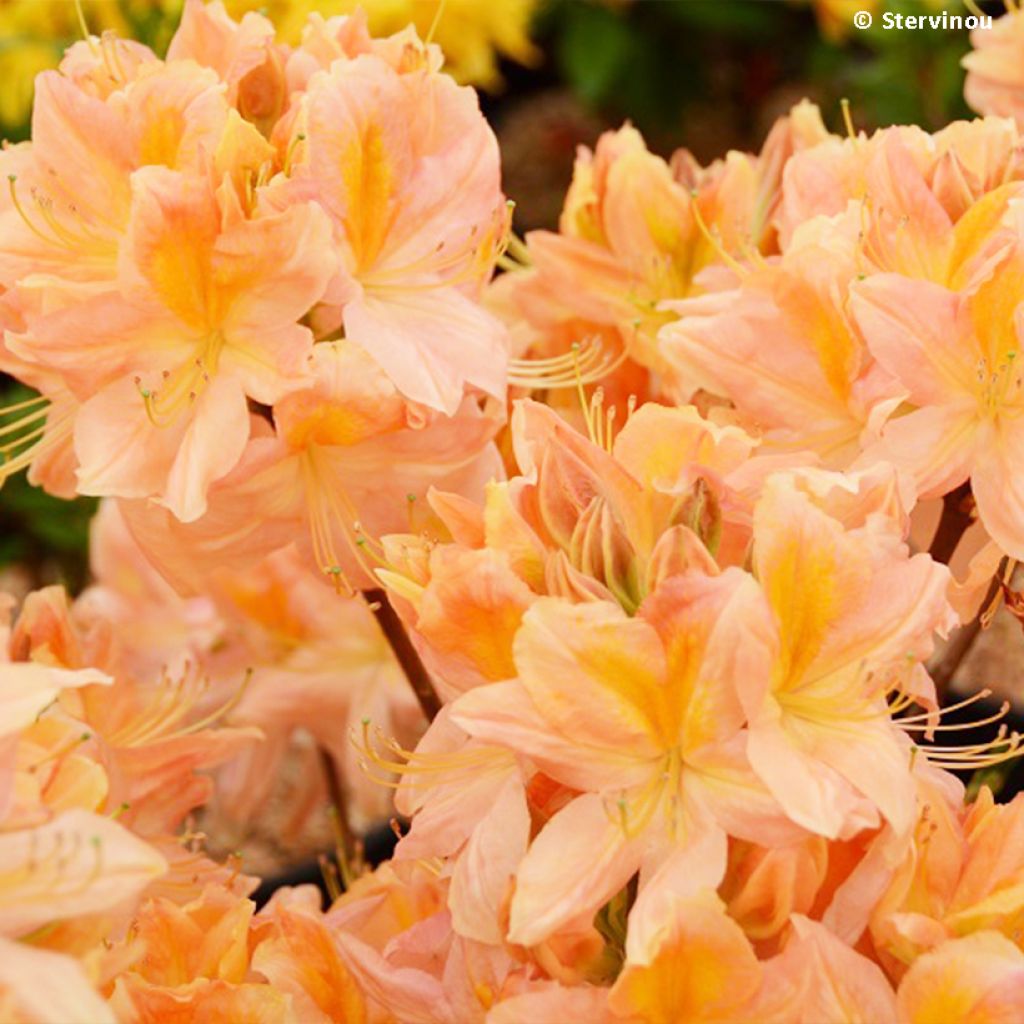

Azalée de Chine Demoiselles de Boutiguery Nella - Rhododendron hybride
View more pictures
Hide images

Cedric V.

Cédric
Cedric V. • BE
Azalea mollis Demoiselles de Boutiguery Nella
Rhododendron (Azalea) x mollis Demoiselles de Boutiguery ® Nella
Chinese Azalea, Soft Rhododendron
Plant in very good condition, perfect packaging, seems to be in excellent shape to thrive.
josiane, 22/03/2025
Special offer!
Receive a €20 voucher for any order over €90 (excluding delivery costs, credit notes, and plastic-free options)!
1- Add your favorite plants to your cart.
2- Once you have reached €90, confirm your order (you can even choose the delivery date!).
3- As soon as your order is shipped, you will receive an email containing your voucher code, valid for 3 months (90 days).
Your voucher is unique and can only be used once, for any order with a minimum value of €20, excluding delivery costs.
Can be combined with other current offers, non-divisible and non-refundable.
Home or relay delivery (depending on size and destination)
Schedule delivery date,
and select date in basket
This plant carries a 24 months recovery warranty
More information
We guarantee the quality of our plants for a full growing cycle, and will replace at our expense any plant that fails to recover under normal climatic and planting conditions.
Would this plant suit my garden?
Set up your Plantfit profile →
Description
The Chinese Azalea 'Demoiselles de Boutiguery Nella' will surprise and delight you with the originality of its flowering. Slightly larger than average, it is above all the colour of the flowers that catches the eye: a subtle combination of pink and orange giving them a completely original and unusual peachy hue. A recent French creation from a family of plant enthusiasts and nurserymen in Brittany, this Azalea is a real gem that lights up the spring. Unlike Japanese Azaleas, this plant is deciduous and perfectly hardy. Too little known and too little used, Chinese azaleas are very graceful plants with a host of wonderful qualities. They grow in lime-free soil. A must in the garden or in a large pot on the terrace!
Azalea is a horticultural term still commonly used, but in botanical terms, they are actually Rhododendrons, whose flowers have 5 stamens instead of 10. Plants from the Ericaceae family, just like heathers, strawberry trees or blueberries, they mostly prefer lime-free, acid soil and damp climates. The deciduous Chinese Azaleas, have fewer requirements than the evergreen Japanese Azaleas: they are very hardy, tolerate the sun and heat better, and even occasionally dry soil, depending on the hybrids. Nevertheless, they will be at their best in cool climates, with distinct winters, planted in humus-rich, fertile, lime-free soil.
The 'Demoiselles de Boutiguery' series is the work of a Breton family, settled on the Domaine de Boutiguery, whose park was designed by the Bühler brothers, renowned landscape designers (they are responsible for the layout of the Tête d'Or park in Lyon, the Thabor park in Rennes and the Courson Castle park in Essonne). Christian de la Sablière and his daughter Virginie work there constantly hybridising Rhododendrons in search of new flower colours. The result is 'Nella', a superb variety with a compact habit, less than a metre tall and wide. The Demoiselles de Boutiguery range is extremely interesting for its abundance of flowers. Even in the first few years, these shrubs bear numerous flower buds, ensuring a spectacular display in spring. Nella' blooms in the form of clusters of flowers grouped at the ends of the branches, in flamboyant bouquets. Their colour is fascinating: a subtle combination of pink and orange, which can be described as peach or melon depending on the light. The corolla, made up of 5 generous, partially overlapping petals, is around 6 cm in diameter. Protruding orange-yellow stamens rise from the centre, curving deliciously upwards and adding to the beauty of the flowers. Covering most of of foliage, this mass of flowers is a real eye-catcher in the garden in May.
Its deciduous foliage is made up of simple, oval-lanceolate, smooth-edged leaves arranged alternately on the branches. They vary in length from 5 to 10 cm (2 to 3.9 in). Their beautiful, bright green colour is a perfect backdrop for the flowers, which stand out clearly against the foliage. At the end of which they can be used to create interesting displays by contrasting them with the purple, golden or grey foliage of other plants.
Azaleas and Rhododendrons have a shallow root system that always needs to be kept moist, but they also dislike waterlogged soil which would suffocate the roots.
This Chinese Azalea 'Nella' will create a sensation in a mixed border, alongside other flowering shrubs. For year-round flowering, plant something like a Hamamelis, Witch Hazel, in the background. A large shrub with graceful winter flowers in yellow, red, orange or purple, depending on the variety chosen, its magical autumn colours will be an additional attraction. Stachyurus praecox will take over in late winter and early spring with its clusters of small, pendulous yellow flowers. It also takes on beautiful colours in autumn. A beautiful Hydrangea from the huge choice available will give you flowers all summer long, and can even be used to make pretty dried-flower bouquets. Finally, you can end the year in style with the Autumn Camellias (Camelia sasanqua), which has an extensive range of flowers in a wide variety of shapes and colours.
Azalea mollis Demoiselles de Boutiguery Nella in pictures
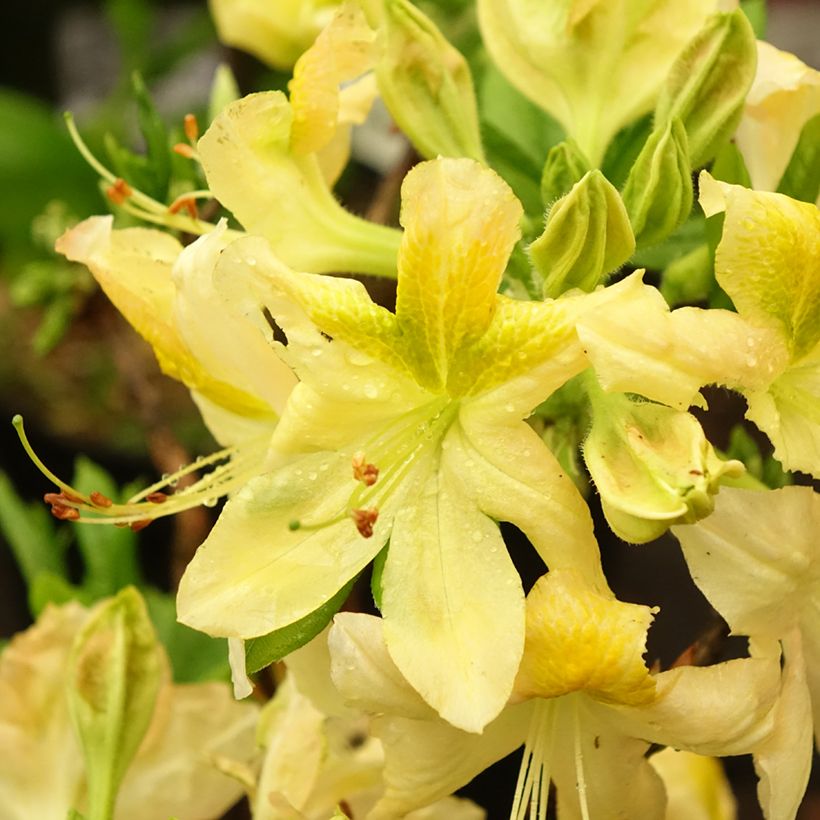

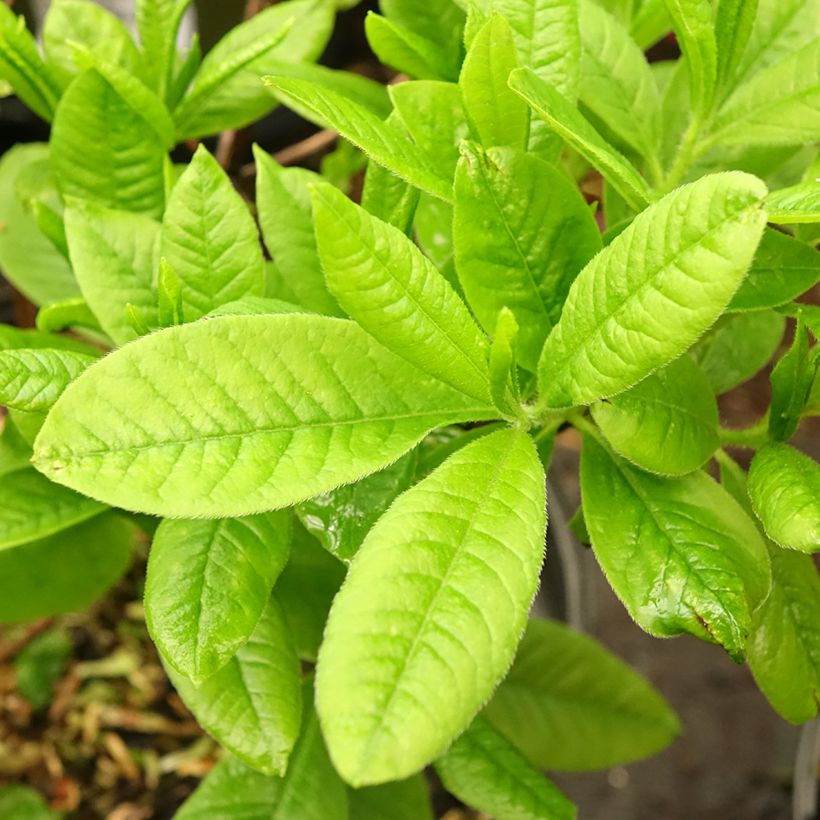

Plant habit
Flowering
Foliage
Botanical data
Rhododendron (Azalea)
x mollis
Demoiselles de Boutiguery ® Nella
Ericaceae
Chinese Azalea, Soft Rhododendron
Cultivar or hybrid
Other Chinese Azalea
View all →Planting and care
The Chinese Azalea Demoiselles de Boutiguery Nella thrives a sunny location, unlike the Japanese Azalea, but its favourite position is in partial shade, or east-facing for the morning sun, especially in very sunny or hot regions. Plant it in an ericaceous or humus-rich, well-drained, lime-free soil that does not dry out in summer.
Make sure not to plant the root ball too deep, it should be level with the surface of the soil. Water copiously with alkaline-free water during dry periods, at least once a week in the first year. In spring, apply a fertilizer for ericaceous plants. Pruning is not essential but it is a good idea to prune lightly after flowering to keep the plant looking neat. Remove spent flowers to encourage new growth. The Azalea suffers from very few diseases when well-established outdoors. It can be attacked by weevils that eat the edges of the leaves and rootlets, and by the famous "Rhododendron lace bug", though not often causing significant damage. If the soil is chalky or poorly drained, or if the rootball is planted too deep, the leaves may turn yellow and eventually die.
Planting period
Intended location
Care
Planting & care advice
-
, onOrder confirmed
Reply from on Promesse de fleurs
Similar products
Haven't found what you were looking for?
Hardiness is the lowest winter temperature a plant can endure without suffering serious damage or even dying. However, hardiness is affected by location (a sheltered area, such as a patio), protection (winter cover) and soil type (hardiness is improved by well-drained soil).

Photo Sharing Terms & Conditions
In order to encourage gardeners to interact and share their experiences, Promesse de fleurs offers various media enabling content to be uploaded onto its Site - in particular via the ‘Photo sharing’ module.
The User agrees to refrain from:
- Posting any content that is illegal, prejudicial, insulting, racist, inciteful to hatred, revisionist, contrary to public decency, that infringes on privacy or on the privacy rights of third parties, in particular the publicity rights of persons and goods, intellectual property rights, or the right to privacy.
- Submitting content on behalf of a third party;
- Impersonate the identity of a third party and/or publish any personal information about a third party;
In general, the User undertakes to refrain from any unethical behaviour.
All Content (in particular text, comments, files, images, photos, videos, creative works, etc.), which may be subject to property or intellectual property rights, image or other private rights, shall remain the property of the User, subject to the limited rights granted by the terms of the licence granted by Promesse de fleurs as stated below. Users are at liberty to publish or not to publish such Content on the Site, notably via the ‘Photo Sharing’ facility, and accept that this Content shall be made public and freely accessible, notably on the Internet.
Users further acknowledge, undertake to have ,and guarantee that they hold all necessary rights and permissions to publish such material on the Site, in particular with regard to the legislation in force pertaining to any privacy, property, intellectual property, image, or contractual rights, or rights of any other nature. By publishing such Content on the Site, Users acknowledge accepting full liability as publishers of the Content within the meaning of the law, and grant Promesse de fleurs, free of charge, an inclusive, worldwide licence for the said Content for the entire duration of its publication, including all reproduction, representation, up/downloading, displaying, performing, transmission, and storage rights.
Users also grant permission for their name to be linked to the Content and accept that this link may not always be made available.
By engaging in posting material, Users consent to their Content becoming automatically accessible on the Internet, in particular on other sites and/or blogs and/or web pages of the Promesse de fleurs site, including in particular social pages and the Promesse de fleurs catalogue.
Users may secure the removal of entrusted content free of charge by issuing a simple request via our contact form.
The flowering period indicated on our website applies to countries and regions located in USDA zone 8 (France, the United Kingdom, Ireland, the Netherlands, etc.)
It will vary according to where you live:
- In zones 9 to 10 (Italy, Spain, Greece, etc.), flowering will occur about 2 to 4 weeks earlier.
- In zones 6 to 7 (Germany, Poland, Slovenia, and lower mountainous regions), flowering will be delayed by 2 to 3 weeks.
- In zone 5 (Central Europe, Scandinavia), blooming will be delayed by 3 to 5 weeks.
In temperate climates, pruning of spring-flowering shrubs (forsythia, spireas, etc.) should be done just after flowering.
Pruning of summer-flowering shrubs (Indian Lilac, Perovskia, etc.) can be done in winter or spring.
In cold regions as well as with frost-sensitive plants, avoid pruning too early when severe frosts may still occur.
The planting period indicated on our website applies to countries and regions located in USDA zone 8 (France, United Kingdom, Ireland, Netherlands).
It will vary according to where you live:
- In Mediterranean zones (Marseille, Madrid, Milan, etc.), autumn and winter are the best planting periods.
- In continental zones (Strasbourg, Munich, Vienna, etc.), delay planting by 2 to 3 weeks in spring and bring it forward by 2 to 4 weeks in autumn.
- In mountainous regions (the Alps, Pyrenees, Carpathians, etc.), it is best to plant in late spring (May-June) or late summer (August-September).
The harvesting period indicated on our website applies to countries and regions in USDA zone 8 (France, England, Ireland, the Netherlands).
In colder areas (Scandinavia, Poland, Austria...) fruit and vegetable harvests are likely to be delayed by 3-4 weeks.
In warmer areas (Italy, Spain, Greece, etc.), harvesting will probably take place earlier, depending on weather conditions.
The sowing periods indicated on our website apply to countries and regions within USDA Zone 8 (France, UK, Ireland, Netherlands).
In colder areas (Scandinavia, Poland, Austria...), delay any outdoor sowing by 3-4 weeks, or sow under glass.
In warmer climes (Italy, Spain, Greece, etc.), bring outdoor sowing forward by a few weeks.






























